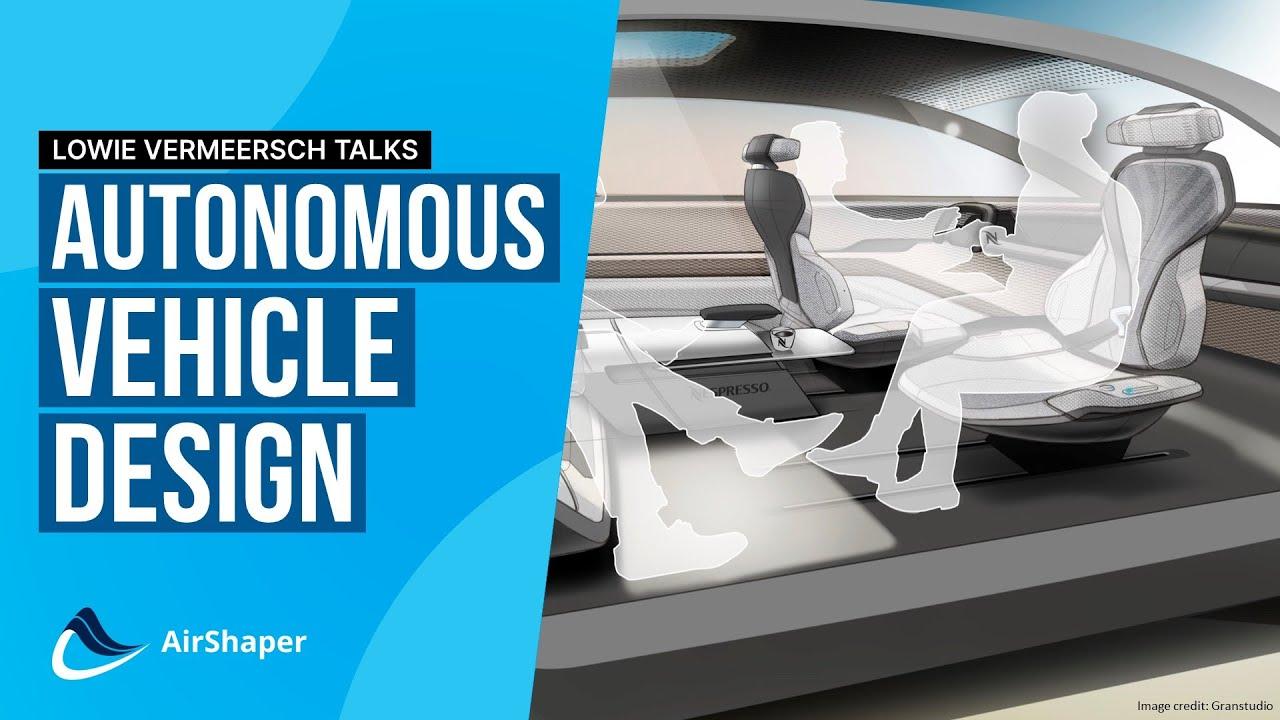Lowie Vermeersch Talks #3 - Autonomous Vehicle Design

Lowie Vermeersch Talks #3 - Autonomous Vehicle Design
Other parts of this interview:
- Part 1 - Ferrari 458 to Lightyear One: https://youtu.be/o4Yv5hynV1Q
- Part 2 - Lightyear One Solar Car: https://youtu.be/TKHjyC_L0OM
- Part 4 - The Dallara Stradale: https://youtu.be/c7NyvCluYVc
In this 3rd part of our video with Lowie Vermeersch, we're looking at the future of autonomous vehicle design and how aerodynamics will play a role in this!
Lowie Vermeersch questions whether aerodynamics will impact autonomous vehicles or vice versa. The general aspect is that the future needs to move towards higher efficiency to become sustainable and to lower the cost of use.
To provide access to electric cars for many people, the cost still needs to come down. Higher efficiency can further reduce the size & cost of the battery. Aerodynamics is a big part of this efficiency.
This applies to both autonomous & privately owned cars, which will for a long time not look very different. Despite nice concept cars, which are marketing tools to enrich a brands value, actual production cars are always tailored to the human body and physical needs/constraints.
Current car design & layout are determined by drive train layout, fashion, and to a large extent the fundamental functions of a car. That's why a Tesla Model 3 doesn't look too different from other cars. It's largely determined by where the people sit, where they sit compared to the wheels, how you build the cabin around them and so on. So Lowie doesn't see it happening that autonomous cars will look entirely different.
That could happen when we reach totally different laws for autonomous cars (level 5). The visibility you need now is more or less defined by the position of the A-pillar. If you can change that, you can change the design in a more fundamental way and move towards more mono volume shapes.
Vehicle safety is also a big aspect: full active safety will change the structure of a car, which is now strongly determined by passive safety. Lowie Vermeersch did a study at Pininfarina in 2006 forecasting this (the Pininfarina Sintesi Concept Car): the moment that digital systems allow for full active safety (not like the passive safety of today, which is designed to allow cars to crash well) to avoid crashes, then you can get rid of the built-in passive safety.
With fully proven active safety, you can make cars much lighter. This can have a much bigger impact on the layout of the car, as many aspects of the current layout are determined by safety.
-----------------------------------------------------------------------------------------------------------
The AirShaper videos cover the basics of aerodynamics (aerodynamic drag, drag & lift coefficients, boundary layer theory, flow separation, reynolds number...), simulation aspects (computational fluid dynamics, CFD meshing, ...) and aerodynamic testing (wind tunnel testing, flow visualization, ...).
We then use those basics to explain the aerodynamics of (race) cars (aerodynamic efficiency of electric vehicles, aerodynamic drag, downforce, aero maps, formula one aerodynamics, ...), drones and airplanes (propellers, airfoils, electric aviation, eVTOLS, ...), motorcycles (wind buffeting, motogp aerodynamics, ...) and more!
For more information, visit www.airshaper.com


